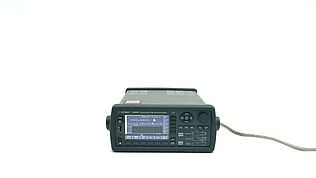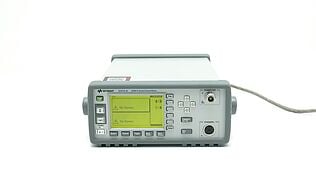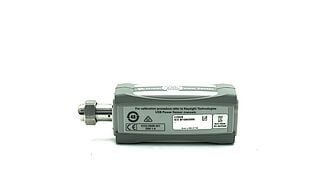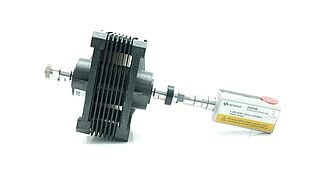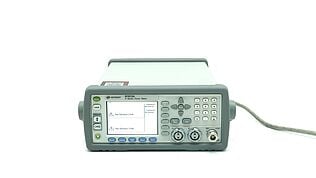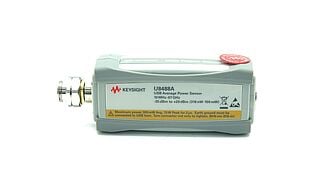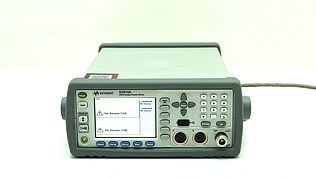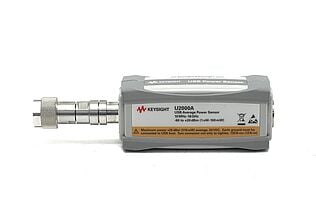- Introduction
- What is Electric Potential?
- What is Potential Difference?
- Why is Potential Difference Important in Electric Circuits?
- Maximize Your Budget with Our Quality Assured Pre-Owned Instruments
- Potential Difference Formula
- Units and Their Interrelation
- Derivation of the Formula
- How to Calculate Potential Difference
- Step-by-Step Guide
- Example 1: Simple Calculation
- Example 2: Moderate Complexity
- Example 3: Higher Complexity
- Common Pitfalls and How to Avoid Them
- Potential Difference Examples
- Comparison Table of Potential Difference in Different Circuit Elements
- Detailed Examples
- Applications of the Potential Difference Formula
- How to Measure Potential Difference
- Using a Voltmeter
- Using a Multimeter
- Safety Tips and Best Practices
- Potential Difference in AC and DC Circuits
- Differences in Potential Difference Calculations
- Nature of AC and DC
- Key Differences Between AC and DC Potential Difference
- AC and DC Applications
- Measuring and Calculating Potential Difference in AC Circuits
- Potential Difference and Electromotive Force
- Relationship Between EMF and Potential Difference
- Interaction of EMF and Potential Difference in a Circuit
- Practical Applications of EMF
- Common Mistakes and How to Avoid Them
- Identifying Common Mistakes
- Tips and Best Practices for Accurate Calculations and Measurements
- Importance of Reliable Measuring Equipment
- Drive Innovation with Precision Potential Difference Measurements
- Whenever You’re Ready, Here Are 5 Ways We Can Help You
Imagine you're an engineer tasked with designing a circuit that maximizes power efficiency. To achieve this, you need a deep understanding of potential difference—it's the cornerstone of all your calculations and decisions.
Understanding and applying this theory are two different things. You may understand the theory but struggle to apply it to solve real-world circuit problems.
This guide aims to clarify the potential difference formula, providing you with clear examples and practical calculations to help you master this essential concept and elevate your engineering projects.
What is Electric Potential?
Electric potential is the amount of electric potential energy per unit charge at a specific point in an electric field. It's a measure of the work done to move a charge from one point to another within the field.
Electric potential is measured in volts (V), where one volt equals one joule per coulomb. This scalar quantity represents the potential energy a unit charge would have at a particular location, providing a crucial foundation for understanding more complex electrical concepts.
What is Potential Difference?
Potential difference, often referred to as voltage, is the difference in electric potential between two points in a circuit. This difference drives the flow of electric current from one point to another.
For instance, the potential difference between the positive and negative terminals of a battery causes electrons to flow through a circuit, powering devices like lights and motors.
Understanding potential difference is key to designing and analyzing circuits effectively, as it influences current flow and energy distribution within the system.
Why is Potential Difference Important in Electric Circuits?
Potential difference plays a crucial role in electric circuits. It acts as the driving force that pushes electric charges through a conductor, creating an electric current. Without potential difference, there would be no flow of electricity, and our modern world would come to a standstill.
Here are a few real-world examples that highlight its importance:
- Household appliances: Devices like refrigerators, washing machines, and microwaves rely on the potential difference to function. The voltage from the power outlet drives the electric current needed to operate these appliances.
- Electronic gadgets: Smartphones, laptops, and tablets require a consistent potential difference to charge their batteries and run various functions.
- Lighting systems: From simple light bulbs to complex LED setups, lighting systems depend on the potential difference to illuminate spaces.
- Electric vehicles: The batteries in electric cars provide a potential difference that powers the motor, enabling the vehicle to move.
Maximize Your Budget with Our Quality Assured Pre-Owned Instruments
Potential Difference Formula
The potential difference formula is given by:
V=W/Q
where:
- V = Potential difference (volts, V)
- W = Work done or energy transferred (joules, J)
- Q = Charge (coulombs, C)
Units and Their Interrelation
- Volts (V): The unit of potential difference. One volt is equivalent to one joule per coulomb.
- Joules (J): The unit of work or energy. It measures the amount of energy transferred or work done.
- Coulombs (C): The unit of electric charge. It represents the quantity of electricity.
These units interrelate as follows: One volt equals the amount of work done (in joules) per unit charge (in coulombs). This relationship is fundamental to understanding how energy is transferred in an electric field.
Derivation of the Formula
To derive the potential difference formula, we start with the basic principles of work and energy in an electric field.
- Work done (W): In an electric field, work is done when a charge moves from one point to another. This work is given by: W=F⋅d where F is the force applied, and d is the distance over which the force is applied.
- Electric force (F): The force on a charge Q in an electric field E is: F=Q⋅E
- Combining equations: Substituting the expression for F into the work equation, we get: W=Q⋅E⋅d
- Electric field (E): The electric field E between two points is related to the potential difference V and the distance d: E=V/d
- Substituting electric field: Replacing E in the work equation, we obtain: W=Q⋅(V/d)⋅d
- Simplifying: The distance d cancels out, leaving us with: W=Q⋅V
- Rearranging for potential difference: Solving for V, we get the potential difference formula: V=W/Q
This derivation shows how the potential difference formula is based on the fundamental concepts of work and energy in an electric field.
How to Calculate Potential Difference
Step-by-Step Guide
- Identify the given values:
- Determine the amount of work done (W) or energy transferred in joules (J).
- Determine the charge (Q) in coulombs (C).
- Use the potential difference formula:
- Apply the formula V = W / Q to calculate the potential difference.
- Calculate:
- Perform the division to find the potential difference in volts (V).
Example 1: Simple Calculation
Problem: Calculate the potential difference if 10 joules of energy is transferred by moving a charge of 2 coulombs.
- Given:
- Work done, W = 10 J
- Charge, Q = 2 C
- Formula:
- V = W / Q
- Calculation:
- V = 10 / 2 = 5 V
Answer: The potential difference is 5 volts.
Example 2: Moderate Complexity
Problem: A battery does 50 joules of work to move a charge of 5 coulombs. What is the potential difference?
- Given:
- Work done, W = 50 J
- Charge, Q = 5 C
- Formula:
- V = W / Q
- Calculation:
- V = 50 / 5 = 10 V
Answer: The potential difference is 10 volts.
Example 3: Higher Complexity
Problem: If a circuit transfers 150 joules of energy and the resulting potential difference is 15 volts, what is the amount of charge moved?
- Given:
- Work done, W = 150 J
- Potential difference, V = 15 V
- Rearrange the formula to solve for charge (Q):
- Q = W / V
- Calculation:
- Q = 150 / 15 = 10 C
Answer: The amount of charge moved is 10 coulombs.
Common Pitfalls and How to Avoid Them
- Incorrect units: Ensure that work (W) is in joules, charge (Q) is in coulombs, and potential difference (V) is in volts.
- Misidentifying values: Carefully read the problem to correctly identify W and Q.
- Division errors: Double-check your calculations, especially when dividing.
By following these steps and being mindful of common pitfalls, you can accurately calculate the potential difference in various electrical scenarios.

Potential Difference Examples
- Simple circuit with a resistor
- In a basic circuit with a resistor, the potential difference across the resistor drives the current through it. For instance, if you have a 9V battery and a 3-ohm resistor, the potential difference across the resistor is 9 volts.
- Voltage output of a battery
- A standard AA battery typically has a potential difference of 1.5 volts. This voltage drives the current through devices like remote controls and clocks.
- Potential difference in power transmission lines
- Power transmission lines carry electricity over long distances with very high potential differences, often in the range of hundreds of kilovolts (kV). This high voltage minimizes energy loss during transmission.
- Household electrical outlets
- In most households, electrical outlets provide a potential difference of 120 volts (in the US) or 230 volts (in Europe). This voltage powers various home appliances.
- Solar panels
- Solar panels generate a potential difference when exposed to sunlight. A typical solar cell produces around 0.5 volts, and multiple cells are combined in a panel to generate a usable voltage.
- Electric vehicles
- The battery packs in electric vehicles often have a potential difference of several hundred volts, providing the necessary power to drive the electric motors.
Comparison Table of Potential Difference in Different Circuit Elements
| Element | Potential Difference (V) |
| Resistor in a Simple Circuit | 9 |
| AA Battery | 1.5 |
| Power Transmission Lines | 100,000+ |
| Household Electrical Outlet (US) | 120 |
| Household Electrical Outlet (EU) | 230 |
| Solar Cell | 0.5 |
| Electric Vehicle Battery Pack | 300+ |
Detailed Examples
- Potential difference across a resistor in a simple circuit
- Scenario: You have a 12V battery connected to a circuit with a 4-ohm resistor.
- Calculation: The potential difference across the resistor is the same as the battery voltage, 12V.
- Explanation: The 12V potential difference drives the current through the resistor, according to Ohm's law (V = IR).
- Voltage output of a battery
- Scenario: Measuring the voltage of a fully charged AA battery.
- Measurement: You find that it provides a potential difference of 1.5V.
- Explanation: This 1.5V is the driving force that powers small electronic devices.
- Potential difference in power transmission lines
- Scenario: High-voltage power lines transmitting electricity over long distances.
- Measurement: The potential difference can be as high as 500,000V (500kV).
- Explanation: Such high voltages reduce energy losses due to resistance in the transmission lines, making long-distance power transmission more efficient.
By understanding these examples and the variations in potential difference across different circuit elements, you can better grasp how voltage plays a critical role in various electrical applications.
Applications of the Potential Difference Formula
The potential difference formula, V=W/Q, is pivotal in both everyday life and industrial settings. Here are some key applications:
- Designing electrical circuits
- Engineers use the formula to determine the necessary voltage for achieving desired current flows through various components. This ensures that circuits function correctly and efficiently.
- Power distribution systems
- The formula helps calculate the voltage required to transmit electricity over long distances with minimal loss. High-voltage power lines move large amounts of electricity efficiently, reducing energy losses due to resistance.
- Electronic devices
- Devices like smartphones, laptops, and household appliances rely on precise voltage regulation to operate correctly. Power supplies use the potential difference formula to maintain stable voltage levels, ensuring devices receive the power they need without damage.
- Voltage regulation
- Power supplies and voltage regulators apply the formula to keep the output voltage steady, protecting electronic devices from voltage fluctuations.
- Measuring battery voltage
- Technicians use the formula to assess battery charge levels and performance, ensuring batteries are functioning correctly and efficiently.
- Diagnosing electrical faults
- By measuring potential difference, technicians can identify voltage drops or inconsistencies, pinpointing issues in circuits and making necessary repairs.
Understanding and correctly using the potential difference formula is essential for designing safe and efficient electrical systems. It ensures that devices operate within their intended parameters and helps maintain the reliability and safety of power distribution and electronic systems.

How to Measure Potential Difference
To measure potential difference, you typically use instruments like voltmeters and multimeters. These tools are essential in both everyday applications and professional settings.
- Voltmeters: Specifically designed to measure voltage, voltmeters are connected across two points in a circuit to determine the potential difference.
- Multimeters: Versatile tools that can measure voltage, current, and resistance. They are widely used due to their multifunctionality.
Using a Voltmeter
- Select the voltmeter
- Ensure the voltmeter is rated for the voltage range you expect to measure (AC or DC).
- Turn off power
- Switch off the power to the circuit before connecting the voltmeter.
- Connect the probes
- Attach the black (negative) probe to the common terminal and the red (positive) probe to the voltage terminal on the voltmeter.
- Connect the probes across the two points where you want to measure the potential difference. Ensure firm contact with the circuit points.
- Turn on power
- Switch the power back on and read the voltage displayed on the voltmeter.
- Record the measurement
- Note the reading, then turn off the power before disconnecting the probes.
Using a Multimeter
- Select the multimeter
- Ensure the multimeter is rated for the voltage range you expect to measure (AC or DC).
- Set the dial
- Set the dial to the appropriate voltage range (ACV or DCV) based on the circuit you are measuring. Start with the highest range if you're unsure.
- Turn off power
- Switch off the power to the circuit before connecting the multimeter.
- Connect the probes
- Attach the black (negative) probe to the common terminal (COM) and the red (positive) probe to the voltage terminal (VΩ) on the multimeter.
- Connect the probes across the two points where you want to measure the potential difference. Ensure firm contact with the circuit points.
- Turn on power
- Switch the power back on and read the voltage displayed on the multimeter.
- Adjust the range (if needed)
- If the reading is too low or too high, turn off the power, adjust the range on the multimeter, and take the measurement again.
- Record the measurement
- Note the reading, then turn off the power before disconnecting the probes.
Safety Tips and Best Practices
- Calibration:
- Regularly calibrate your measuring instruments to maintain accuracy.
- Inspect and maintain instruments
- Check for any damage to the probes or the instrument itself. Replace any worn-out components.
- Use the correct range
- Always start with the highest range on a multimeter to prevent damage to the instrument. Adjust the range downward if needed.
- Avoid contact with live circuits
- Never touch the probes or the circuit with bare hands while the power is on. Use insulated tools and wear rubber-soled shoes.
- Store instruments properly
- Keep your measuring tools in a dry, dust-free environment to prevent damage.
By following these steps and best practices, you can measure potential difference safely and accurately using a voltmeter or multimeter, ensuring the reliability of your electrical systems and devices.
Potential Difference in AC and DC Circuits
Differences in Potential Difference Calculations
The potential difference in direct current (DC) circuits remains constant, whereas in alternating current (AC) circuits, it varies with time. This fundamental difference impacts how potential difference is calculated and measured in each type of circuit.
Nature of AC and DC
- Direct Current (DC): In DC circuits, the current flows in a single direction, providing a constant potential difference. Batteries and other DC power sources maintain a steady voltage output.
- Alternating Current (AC): In AC circuits, the current periodically reverses direction, causing the potential difference to oscillate. The voltage in AC systems is typically represented as a sine wave, with parameters such as peak voltage, RMS (root mean square) voltage, and frequency.
Key Differences Between AC and DC Potential Difference
| Aspect | DC | AC |
| Current Direction | Flows in one direction | Alternates direction periodically |
| Voltage Behavior | Constant | Varies with time (sine wave) |
| Measurement | Simple, direct voltage measurement | Requires RMS value for effective measurement |
| Source | Batteries, DC power supplies | Power plants, household electricity |
| Applications | Battery-operated devices, electronics | Household appliances, industrial equipment |
| Calculation | V = W / Q | Vrms = Vpeak / √2 |
| Unique Challenges | None | Measuring peak, RMS, and average values |
AC and DC Applications
- DC applications: Batteries, solar panels, and many electronic devices like laptops and mobile phones use DC. The constant voltage ensures stable operation of sensitive electronics.
- AC applications: Household electricity and large-scale power distribution use AC. The ease of transforming voltages and reduced power losses over long distances make AC ideal for such applications.
Measuring and Calculating Potential Difference in AC Circuits
In AC circuits, the potential difference is typically measured using RMS values, which provide an equivalent DC value for the same power delivery. The RMS value is calculated as:
Vrms = Vpeak / √2
Unique Considerations and Challenges:
- Time variation: Since AC voltage varies with time, oscilloscopes or true RMS multimeters are necessary for accurate measurement.
- Frequency: AC measurements must account for frequency, which affects how potential difference behaves.
- Complex waveforms: Non-sinusoidal waveforms require more complex calculations and instrumentation to measure accurately.
Understanding these differences and challenges ensures accurate measurement and effective use of potential difference in both AC and DC circuits.
Potential Difference and Electromotive Force
Electromotive force (EMF) is defined as the energy provided by a source, such as a battery or generator, per unit charge. While EMF is often referred to as voltage, it specifically refers to the total energy supplied by the source to drive the electric current through a circuit. EMF is measured in volts (V).
Relationship Between EMF and Potential Difference
Although EMF and potential difference are both measured in volts and can be thought of as types of voltage, they have distinct roles in an electric circuit. EMF represents the energy supplied by the source to move charges, while potential difference (or voltage) refers to the energy difference between two points in the circuit.
Interaction of EMF and Potential Difference in a Circuit
In a circuit, the EMF of the power source drives the current through the circuit. However, as the current flows through various components, such as resistors, the potential difference across these components will be less than the EMF due to the energy loss (voltage drop) caused by the resistance.
Example: Simple Circuit with a Battery and Resistor
- Scenario: A 12V battery with an EMF of 12 volts is connected to a circuit with a 4-ohm resistor.
- Calculation: The EMF (12V) drives the current through the circuit. Using Ohm's law, I=V/R, where I is the current, V is the voltage, and R is the resistance: I=12V/4Ω=3A. The potential difference across the resistor is the same as the EMF because there is only one resistor in the circuit.
Example: Circuit with Internal Resistance
- Scenario: A 12V battery with an internal resistance of 1 ohm is connected to a 4-ohm resistor.
- Calculation: The total resistance in the circuit is the sum of the internal resistance and the resistor, which is 5 ohms. I=12V/5Ω=2.4A. The potential difference across the resistor is: V=I×R=2.4A×4Ω=9.6V. The EMF is 12V, but the potential difference across the external resistor is 9.6V due to the voltage drop across the internal resistance.
Practical Applications of EMF
- Power generation: In power plants, generators convert mechanical energy into electrical energy, providing an EMF that drives the current through the power grid. This EMF is essential for the distribution of electricity over long distances.
- Battery technology: Batteries provide a constant EMF that powers electronic devices. The EMF of a battery determines how much energy it can supply per unit charge, impacting the performance and efficiency of the device.
Understanding the distinction between EMF and potential difference is crucial for designing and analyzing electrical circuits, ensuring efficient energy use and reliable performance in various applications.

Common Mistakes and How to Avoid Them
Identifying Common Mistakes
Working with potential difference can sometimes lead to errors that impact the accuracy of your calculations and measurements. Here are some common mistakes and how to avoid them:
- Incorrect unit conversions
- Misconverting units, such as joules to volts or coulombs, can lead to significant errors in calculations.
- Solution: Always double-check your unit conversions and use consistent units throughout your calculations.
- Misinterpretation of circuit diagrams
- Misreading or misunderstanding circuit diagrams can lead to incorrect identification of potential difference points.
- Solution: Take your time to carefully analyze circuit diagrams, paying attention to the arrangement of components and connections.
- Improper use of measuring instruments
- Using a multimeter or voltmeter incorrectly can result in inaccurate readings.
- Solution: Familiarize yourself with the correct operation of your measuring instruments and always follow the manufacturer’s instructions.
Tips and Best Practices for Accurate Calculations and Measurements
- Double check units
- Ensure that you are using the correct units (volts, joules, coulombs) and that conversions are accurate.
- Analyze circuit diagrams carefully
- Study circuit diagrams thoroughly before performing any calculations or measurements. Look for key points where potential difference should be measured.
- Use proper measuring techniques
- Always connect the probes of your multimeter or voltmeter correctly, and make sure the device is set to the correct measurement range (AC or DC).
- Calibrate instruments regularly
- Ensure your measuring instruments are calibrated regularly to maintain their accuracy.
- Avoid parallax errors
- When reading analog instruments, ensure you are looking directly at the needle to avoid parallax errors.
- Record measurements accurately
- Write down your measurements immediately and double-check for any inconsistencies.
Importance of Reliable Measuring Equipment
Having reliable and well-maintained measuring equipment is crucial for accurate measurements. Reliable instruments reduce the likelihood of errors and ensure the precision of your readings. Regular calibration and maintenance are essential to keep your tools in optimal condition.
By following these tips and best practices, you can avoid common mistakes and ensure accurate calculations and measurements of potential difference in various electrical applications.
Drive Innovation with Precision Potential Difference Measurements
Understanding and accurately measuring potential difference is essential for engineers and technicians aiming to design efficient, reliable circuits and systems.
By mastering the potential difference formula, distinguishing between AC and DC measurements, and avoiding common mistakes, you can achieve the precision needed to push the limits of power efficiency. Whether you're solving real-world circuit problems or ensuring the performance of household appliances, reliable measurements are key.
At Keysight, we recognize the challenges and frustrations you face in bridging theory and practice. That's why we provide premium used measuring equipment, which ensures precise, reliable test results.
With our high-quality tools, you can drive innovation and achieve your design goals with confidence, knowing that you have the best equipment at your disposal. Let us support your journey towards precision and efficiency in all your electrical projects.
Whenever You’re Ready, Here Are 5 Ways We Can Help You
- Browse our premium used network analyzers, oscilloscopes, signal analyzers and waveform generators.
- Call tech support US: 1 800 829-4444
Press #, then 2. Hours: 7am – 5pm MT, Mon– Fri - Talk to our sales support team by clicking the icon (bottom right corner) on every offer page
- Create an account to get price alerts and access to exclusive waitlists
- Talk to your account manager about your specific needs





